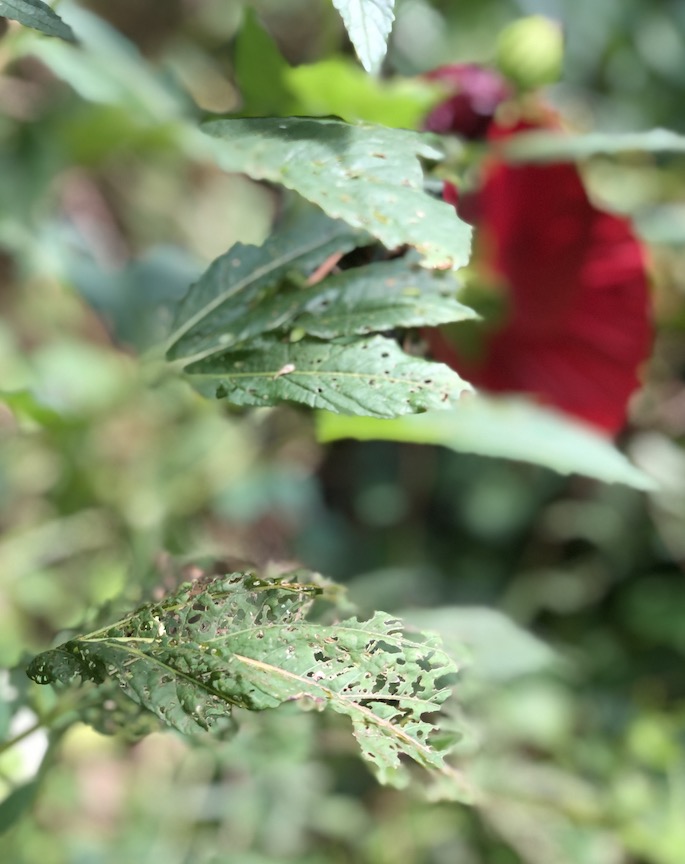
Even though dinner plate-sized deep red flowers of a perennial hibiscus are becoming stars of the late summer garden, the foliage is riddled with holes resembling Swiss cheese.
It doesn’t take long to find the culprit. Little worms called sawfly larvae are working their way up the plant. They also can be found on roses this time of the year.
When dealing with pest or disease problems in the garden, it’s important not to panic and identify the problem before taking action.
If the issue cannot be identified with an Internet search, take a piece of the plant or the pest in a resealable plastic bag to a garden center. They’ll be able to diagnose the problem.
It’s also critical to understand that most insects are either good for the garden or benign. That’s why finding a way to deal with the bad bug in a manner that keeps the good ones safe is the way organic gardeners handle problems.
For chewing insects like the sawfly larvae, Japanese beetles, cabbage worms and others, there’s an organic control called Capt. Jack’s Dead Bug Brew. It can be found at most garden centers, nurseries and even some hardware stores.
It’s sprayed on the plant itself so that the pest will ingest the active ingredient called Spinosad. Experts tell us that spraying early in the morning is best, before the pollinators start flying. Try to keep the brew off the flowers too, you don’t want the good bugs to eat the Spinosad.
Once a pest eats the active ingredient, the Spinosad goes to work on its nervous system and the insect will stop feeding and then die.
Don’t discount hand picking either, it’s a great way to put a dent in the bed bug population. Knocking the pests into a jar of soapy water is an effective method for insect control.
For sucking insects like aphids, spider mites and whiteflies, insecticidal soap or horticultural oil will work. In this case, the pest itself is covered with the spray, be sure to get underneath the leaves.
Forget about the homemade versions from the Internet. Use something that’s been tested and assured to be safe.
There are some fungal diseases that appear this time of the year. Early blight and Septoria leaf spot on tomatoes seem to be on many gardeners’ minds. This is especially true for plants added to the garden in mid to late May. Cool weather and spring rains splash spores up onto the bottom of the lower leaves and when the foliage stays wet for a day or so, those spores work their way into the plant.
When the humidity rises along with temperatures in mid to late summer, the disease manifests itself. This story explains what can be done in spring and early summer, next season, to help stop these issues with tomatoes.
For now, remove the infected foliage and treat the plant with an organic biofungicide like Bonide’s Revitalize. Biological control is the safest type of fungicide and is an effective tool to keep fungal diseases in check.
Most fungal issues are best dealt with as early as possible and oftentimes before there are signs of damage.
A good example is a black spot on roses or powdery mildew on phlox. When a plant contracts these diseases annually is a candidate for preventative spraying of the biofungicide.
One other issue which has been prevalent this year with tomatoes is blossom end rot. It’s not really a disease, but a cultural problem. It occurs when the fruit does not receive the calcium it needs, but the solution is rarely to add calcium to the soil. It’s usually there, but can’t reach the fruit without evenly moist soil. Mulch and proper watering will prevent the problem. Once it’s discovered on a tomato, the fruit can heal sometimes and subsequent tomatoes can be unaffected if the soil stays moist.
One thing that helps prevent diseases and pest issues is to keep plants growing strong by giving them the water and nutrients they need, especially during the heat of summer.
Even though a nice layer of mulch will keep the soil evenly moist, it’s also the perfect place for slugs to spend their days. Their damage often confounds gardeners, as they feed at night. Looks for a silvery, slimy trail as an indication that slugs are the issue. They love hostas, that’s also a great way to tell if they are feasting on the garden. Slugs can make quick work of newly planted seedlings. Sluggo is an organic pellet that overdoses the pest on iron, which is safe for the garden and only eaten by the slugs.
Mole and voles need to be properly identified in the garden. Moles are actually a good thing unless the tunnels are in a spot that’s unsightly or making the landscape unsafe. They eat grubs, aerate the soil and even leave a little bit of fertilizer behind.
Voles on the other hand are vegetarians and enjoy the roots of plants along with potatoes, beets and a host of other plants.
Both are controlled the same way but applying an organic product called Mole Scram. It uses garlic and castor oil to repel moles and voles.
Nobody said gardening was easy, but controlling pests and diseases organically is a great way to enjoy the garden, knowing pollinators and other living things can safely continue to help the garden.
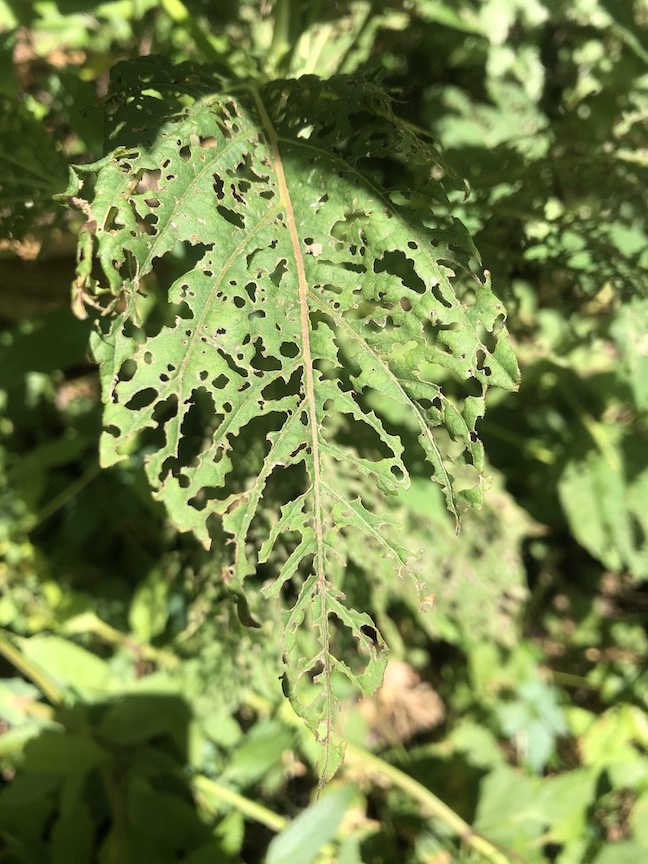
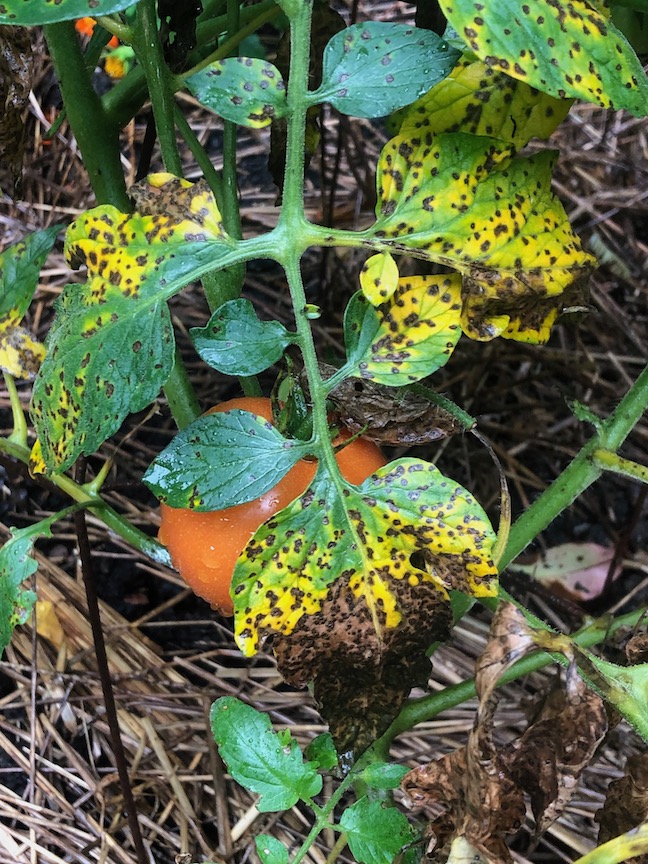
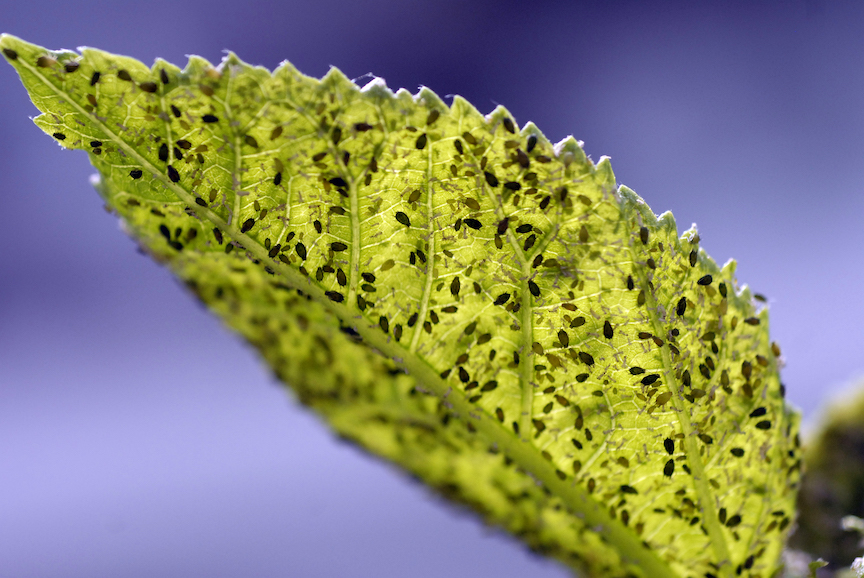

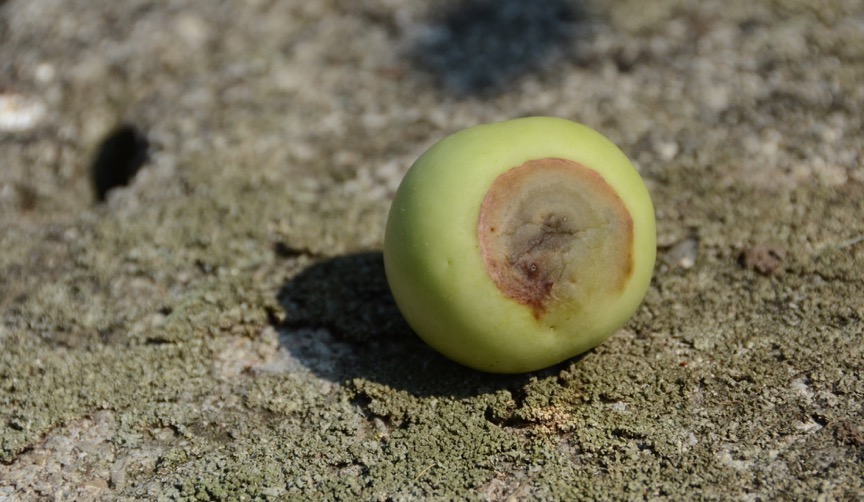
Doug Oster writes a weekly column for The Green Voice Weekly Newsletter.
He also the host of The Organic Gardener Radio Show every Sunday morning at 7 a.m. on KDKA radio 1020AM.
To see more garden stories, photos and videos go to dougoster.com.
Watch Doug’s new television show for CBS/Pittsburgh Streaming here. This week he’s planting dandelions in PittMoss and Davey Tree has summer storm preparation tips for trees.

Good morning Doug ,trying to locate your new t v program. I checked with cbs streaming but can’t find anything. It’s 9:00 Sat. It is 9:00 Saturday, right. Look forward to your help. Thanks Barb
Thanks for posting the picture of the sawfly damso on the hibiscus. Now I know what was eating the early leaves of my dinner plate hibiscus.